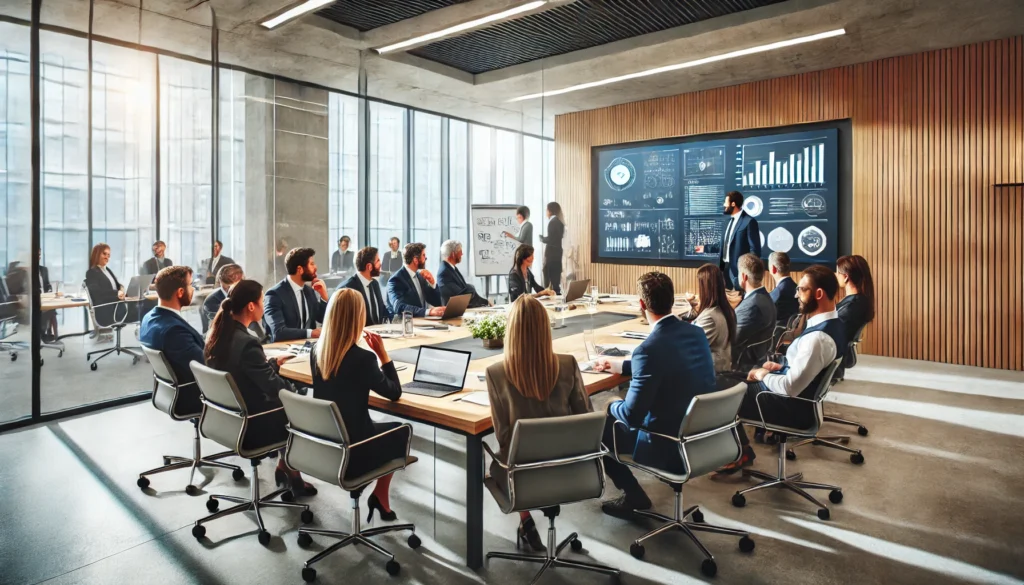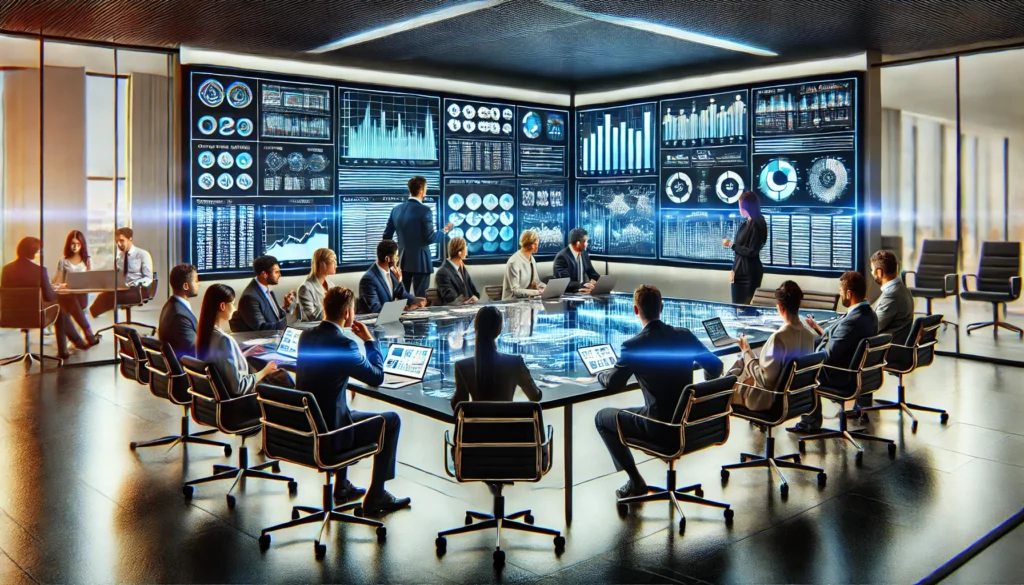The first step in mastering how to run a team meeting is understanding its core purpose. Team meetings should not be held out of habit but should serve a specific goal, such as information sharing, decision-making, problem-solving, or team building. The purpose of team meetings should be clearly defined and communicated to all participants ahead of time to align expectations and focus.
You may also like: How to Keep Meetings Focused and Efficient
Defining Clear Objectives
To run an effective team meeting, it is crucial to establish clear objectives. These objectives act as a guide to keep the meeting on track and ensure that all discussion points contribute towards achieving these goals. An objective might be to brainstorm new ideas for a project, update the team on progress, or resolve a specific issue. When objectives are clear, meetings become more structured and outcomes more measurable.
Aligning Objectives with Team Goals
Once you’ve defined the objectives, it’s important to align them with the broader goals of your team or organization. This alignment ensures that the meeting contributes to the overall mission and vision. Discussing how each meeting’s objectives fit into the larger picture can enhance team members’ understanding and motivation. When everyone sees the direct impact of their contributions, it fosters a sense of ownership and accountability.
Communicating the Purpose
Effective communication of the meeting’s purpose is essential for setting expectations. Send out a pre-meeting communication, such as an email or a memo, detailing the objectives and any preparatory work required. This ensures that participants come prepared and can contribute meaningfully. A well-communicated purpose also helps in keeping the meeting focused and on track.
Preparing for the Meeting
Preparation is the key to running efficient team meetings. An agenda should be distributed in advance, outlining the topics to be covered, the time allocated for each, and who will be leading each section. This preparation helps to set the stage for a focused and productive discussion.
Crafting a Detailed Agenda
A well-crafted agenda is a roadmap for your meeting. It should include:
- Topics to be Discussed: Clearly list the topics that will be covered.
- Time Allocation: Assign a specific amount of time to each topic to avoid overruns.
- Speakers: Indicate who will present each topic or lead the discussion.
- Desired Outcomes: Specify what you hope to achieve with each agenda item.
An agenda not only keeps the meeting on track but also helps attendees prepare and contributes to a more dynamic and engaging conversation.
Prioritizing Agenda Items
When creating an agenda, prioritize items based on urgency and importance. Addressing the most critical issues first ensures that even if time runs out, the most important topics have been covered. This prioritization helps in managing time efficiently and ensures that key decisions or discussions are not sidelined. Encourage participants to suggest agenda items in advance, fostering a sense of collaboration and ensuring all relevant topics are addressed.
Gathering Necessary Materials
Ensure that all materials needed for the meeting, such as reports, slides, or documents, are prepared and distributed in advance. This allows participants to review and come prepared with insights and questions, fostering a more engaging and productive discussion.
Setting the Environment
The physical or virtual environment where the meeting takes place can significantly impact its success. For in-person meetings, ensure the room is comfortable, the seating arrangement fosters interaction, and necessary equipment like projectors or whiteboards are available. For virtual meetings, test technology beforehand, ensure everyone has access to the platform, and consider visual backgrounds that minimize distractions. A conducive environment enhances focus and engagement.
Leading the Meeting
The way you lead a meeting can significantly impact its effectiveness. As the meeting leader, your role is to facilitate discussion, ensure participation, and keep the meeting on schedule.

Encouraging Participation
To have a productive team meeting, it is important to encourage active participation from all attendees. This can be achieved by asking open-ended questions, soliciting feedback, and creating an inclusive environment where everyone feels comfortable sharing their thoughts.
Balancing Voices
In every team, there are varied personalities—some more vocal, others more reserved. As a meeting leader, it’s crucial to balance these voices by inviting quieter members to share their insights and ensuring that dominant participants do not monopolize the conversation. This balance creates a more equitable environment where diverse ideas can flourish. Techniques like round-robin sharing or breakout groups can be useful in achieving this balance.
Managing Time Effectively
Time management is crucial in maintaining the efficiency of team meetings. Stick to the time allocations set in the agenda and be prepared to steer conversations back on track if they veer off course. If a topic requires more time than anticipated, consider scheduling a follow-up meeting rather than extending the current one.
Handling Conflicts
Conflicts or disagreements can arise during meetings, but they don’t have to derail the proceedings. Address conflicts by encouraging constructive dialogue, focusing on the issue rather than personalities, and seeking common ground. As a leader, demonstrate active listening and empathy, and guide the team toward a resolution or compromise. When handled well, conflicts can lead to innovative solutions and stronger team cohesion.
Post-Meeting Actions
The effectiveness of a meeting is not only determined by what happens during it but also by the actions taken afterward. Clear follow-up steps and accountability measures are essential.
Summarizing and Assigning Tasks
At the end of the meeting, summarize the main points discussed and any decisions made. Clearly assign tasks to specific individuals and set deadlines. This ensures accountability and helps keep projects on track.
Creating Action Plans
Transform meeting discussions into actionable plans by outlining detailed steps, assigning responsibilities, and setting timelines. Use collaborative tools to track progress and keep everyone informed. An action plan serves as a reference point for what needs to be done, who is responsible, and when it should be completed. This clarity drives accountability and ensures follow-through.

Gathering Feedback
After the meeting, gather feedback from participants to understand what went well and what could be improved for future meetings. This feedback loop is vital for continuously enhancing the quality and effectiveness of your team meetings.
Conducting Follow-Ups
Regular follow-ups ensure that assigned tasks are progressing as planned. Schedule brief check-ins to discuss obstacles, celebrate milestones, and adjust plans as necessary. These follow-ups reinforce accountability and keep the momentum going, ensuring that the meeting’s outcomes are realized and not forgotten.
Future Trends in Team Meetings
As we look ahead, the landscape of team meetings is evolving with technological advancements and changing work environments. Virtual and hybrid meetings are becoming more prevalent, necessitating new strategies for engagement and participation.
Embracing Technology
Leveraging technology such as video conferencing tools, collaborative platforms, and digital whiteboards can enhance the team meeting experience, especially for remote teams. These tools facilitate real-time collaboration and make it easier to include diverse perspectives, regardless of geographical location.
Utilizing AI and Automation
Artificial intelligence and automation are playing a growing role in team meetings. AI tools can transcribe meetings, highlight key points, and even suggest follow-up actions. Automation can streamline scheduling, send reminders, and manage follow-ups, reducing the administrative burden on team leaders. Embracing these technologies can make meetings more efficient and allow teams to focus on strategic discussions.
Adapting to Hybrid Models
With more teams working in hybrid models, it is important to adapt meeting practices to ensure inclusivity and engagement for both in-person and remote attendees. This might involve investing in high-quality audio-visual equipment, adjusting meeting formats, or setting specific etiquette for virtual participation.
Fostering a Collaborative Culture
As meetings evolve, fostering a collaborative culture becomes increasingly important. Encourage open communication, transparency, and shared ownership of meeting outcomes. Use meetings as opportunities to strengthen team bonds, celebrate achievements, and address challenges collectively. A collaborative culture enhances engagement and drives innovation, ensuring meetings are not just tasks but valuable experiences.
Conclusion
Running engaging and effective team meetings requires thoughtful preparation, clear communication, and active leadership. By setting clear objectives, crafting detailed agendas, encouraging participation, and leveraging technology, you can transform your meetings into powerful tools for collaboration and innovation. As the dynamics of work continue to evolve, staying adaptable and open to new strategies will ensure your team meetings remain impactful and productive.

By following these best practices, you can lead team meetings that not only achieve their goals but also energize and motivate your team, fostering a culture of open communication and continuous improvement. Engaging team meetings are a cornerstone of successful teamwork, driving progress and creating a cohesive, motivated workforce ready to tackle future challenges.
Further Reading:
6 Strategies to Conduct Productive and Effective Team Meetings
Tools for Effective Team Meetings
Six Types of Team Meetings You Need (And 3 You Don’t)
Important Note: The information contained in this article is for general informational purposes only, and should not be construed as health or medical advice, nor is it intended to diagnose, prevent, treat, or cure any disease or health condition. Before embarking on any diet, fitness regimen, or program of nutritional supplementation, it is advisable to consult your healthcare professional in order to determine its safety and probable efficacy in terms of your individual state of health.
Regarding Nutritional Supplements Or Other Non-Prescription Health Products: If any nutritional supplements or other non-prescription health products are mentioned in the foregoing article, any claims or statements made about them have not been evaluated by the U.S. Food and Drug Administration, and such nutritional supplements or other health products are not intended to diagnose, treat, cure, or prevent any disease.


